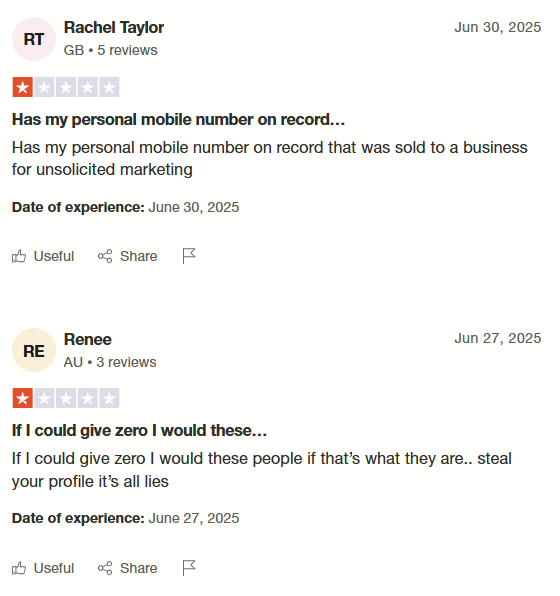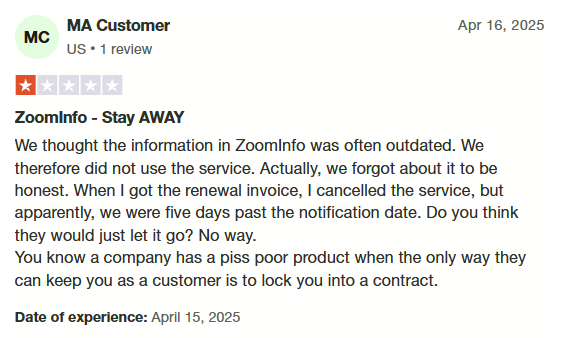Clay vs ZoomInfo vs Leadsforge: Lead Generation Tool Comparison



Database Coverage & Multiple Data Sources
All three platforms provide extensive databases of B2B contacts and companies, but their approaches differ:
- Clay aggregates data from 130+ premium sources in one platform. It connects to multiple vetted providers to cover firmographics, technographics, funding data and more.
- ZoomInfo maintains one of the largest proprietary contact databases with detailed company profiles. It offers broad global coverage and frequent real-time updates, although the ethics of where they source their data are unclear.

- Leadsforge taps sources through AI with access to 500M+ prospects. Its AI engine Unlike tools with fixed databases, Leadsforge can continually refresh and expand its list via AI.
Data Quality & Accuracy
Data quality is crucial for successful lead generation. Poor data wastes outreach efforts. All three platforms emphasize providing accurate data, but they handle it differently:
- Clay leverages its multi-provider model and AI to increase accuracy.
- ZoomInfo stresses data reliability by maintaining very reliable global contact data with frequent real-time updates.
- Leadsforge uniquely embeds real-time verification into its process. It automatically verifies each email as part of list building. Leadsforge’s AI will automatically verify data accuracy to make sure you have the most up-to-date information.
Leadsforge’s approach means up-to-date information is provided without extra steps. By contrast, Clay and ZoomInfo enrich after retrieving data, while Leadsforge enriches on-the-fly, minimizing manual corrections.
AI-Driven Lead Search
An AI-driven approach sets Leadsforge apart:
- Unlike the other tools, Leadsforge provides advanced search capabilities and lets users describe their ideal customer in plain English
- Its chat interface interprets natural-language queries, then generates a precise list of prospects
- This means no manual filters, custom queries, or complex setup are needed - you simply type your target criteria.
In comparison, Clay provides AI assistance via research agents and formula generators, but still uses a table/workflow interface. It relies on AI to fetch data points or summarize, yet users build queries more traditionally.
ZoomInfo uses predictive analytics and intent signals, but it still depends on users specifying firmographics or intent keywords.
Intent Data & Signals
Clay provides custom signals for events like job changes, funding announcements, etc.. It boasts monitoring 3M+ companies for buyer signals, so users can time outreach perfectly.
ZoomInfo excels in buyer intent and market intelligence. ZoomInfo tracks content engagement to flag ready-to-buyaccounts.
Leadsforge, instead, emphasizes AI lead discovery. Its users create lists directly and rely on continuous verification. While ZoomInfo and Clay specialize in "company signals", Leadsforge focuses on finding specific contacts via AI search.
Data Enrichment & Contact Details
Enrichment - adding emails, firmographics - is vital:
- Clay can automatically enrich CRM records, build lists, and clean data using multiple sources. This ensures Clay offers high coverage.
- ZoomInfo's API can update records in CRMs, adding direct-dial numbers and firmographic details. It includes emails, business/mobile phone numbers plus organizational hierarchies for each lead.
- Leadsforge builds lead lists and automatically compiles full profiles for each prospect. Leadsforge returns a full contact profile: verified emails, company names, and job titles in one search.
Leadsforge’s enrichment stands out for speed and automation. It provides instant and accurate contact data with each query, meaning quick lead generation efforts and less time on manual processes.
Workflow Automation & Integration
Automating the sales process is key to efficiency:
- Clay offers flexible, iterable workflows to put data into action. You can connect data to any tool on a schedule. Clay supports complex logic (conditional steps, fallbacks) without coding.
- ZoomInfo connects natively with major CRMs (Salesforce, HubSpot, etc.) and allows exporting leads via API.
Leadsforge further simplifies automation:
- It eliminates manual data entry in prospecting.
- You describe a target and the AI does list building, verification, and syncing.
- Leadsforge can natively sync lists to Salesforce, HubSpot, Pipedrive or feed via API.
- Leads generated flow directly into the sales or marketing stack without extra effort.
- Leads generated can be exported as CSV files, allowing you to import them into absolutely any outreach stack that supports them.
- Leadsforge is part of the Forge ecosystem - meaning it easily integrates with the other Forge products to provide a comprehensive and seamless full outreach stack.
User Interface & Ease of Use
The user interface (UI) and learning curve vary greatly:
- Clay’s UI centers on a visual workflow builder, which can be easy for technical users but requires some training to master multi-step automations.
- ZoomInfo’s UI offers many advanced features, filters, and dashboards, though many users report a steep learning curve due to its complexity.
- Leadsforge's chat-style interface means no filters or menu clicking - just natural language. New users can type descriptions and get results immediately, drastically reducing onboarding time.
Outreach & Prospecting Features
Clay provides email tools (inbound form auto-enrich, outbound campaign builders).
ZoomInfo includes functionalities like list segmentation and campaign engagement metrics.
Leadsforge focuses on list creation: once the AI builds a target list, you can refine and export it instantly.
Pricing & Access
Pricing models differ: Clay and Leadsforge use credit-based or usage plans, while ZoomInfo is largely enterprise-level pricing:
- Clay offers a limited free plan and paid plans start around $134/month.
- Leadsforge grants immediate free credits on sign-up and paid plans start around $49/month.
- ZoomInfo typically requires contacting sales for a quote, reflecting its focus on large companies and higher cost. Not to mention their occasional tendency to lock customers into contracts:

In any case, users must consider budget: Leadsforge tends to be more accessible for small teams.
Choosing the Right Tool For Your Sales and Marketing Needs
For sales and marketing professionals, the right choice between depends on the sales workflow and business needs:
- If you need a comprehensive sales intelligence platform with an extensive database and intent signals, ZoomInfo is a proven choice.
- For a tool where advanced automation and multi-source enrichment are key features, Clay shines with its AI agents and flexible workflows.
- However, for quick lead list creation with no steep learning curve and affordable pricing, Leadsforge stands out. It uses an AI-driven approach to simplify every step of prospecting.
Leadsforge's emphasis on accurate data and automation means fewer wasted resources in cold outreach. As a result, many might consider Leadsforge the right tool for lean teams and growth-minded sales operations.
Wanna hear more from the Forge?
Frequently asked questions
Leadsforge stands out with its AI-driven search engine that allows users to describe their ideal customer in natural language, instantly generating targeted lead lists from a database of over 500 million contacts.
Leadsforge excels in user-friendliness. Its AI-powered search engine enables users to simply describe their ideal customer, eliminating the need for complex filters or settings. This approach is particularly beneficial for those new to lead generation or seeking a more intuitive process.
Leadsforge offers exceptional value for small businesses and startups. Its AI-driven search engine simplifies the lead generation process, reducing the need for extensive training or resources. Additionally, the platform's real-time data verification ensures that businesses are working with the most accurate and current information, maximizing the efficiency of their outreach efforts.
Leadsforge enables users to sync their lead lists directly to tools, such as ones within the Forge ecosystem, or download them as CSVs for use with other tools, providing flexibility in managing leads across different platforms.
Leadsforge integrates with Warmforge, a dedicated Email Deliverability Center (which comes bundled for free together with the sales execution platform Salesforge), to provide users with tools and insights to optimize their email deliverability and ensure successful outreach.
Definitely. Its AI-powered search engine allows users to generate targeted lead lists by simply describing their ideal customer, without the need for complex filters or settings. This approach makes lead generation accessible to a broader audience, including those without a technical background.